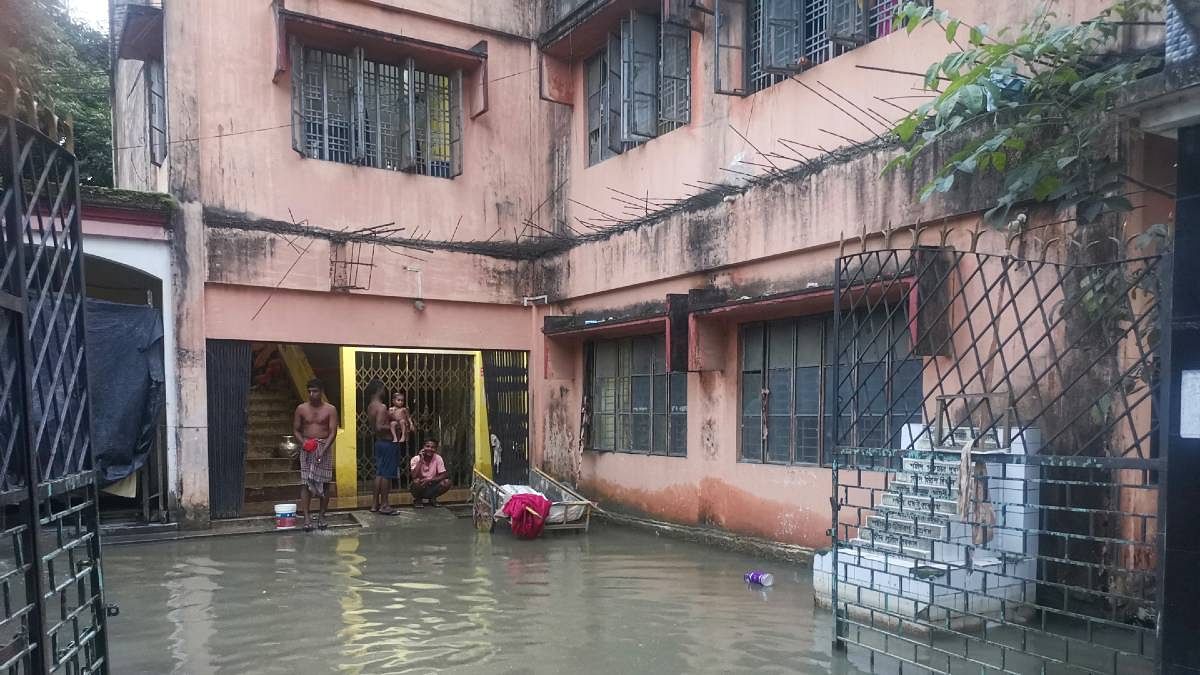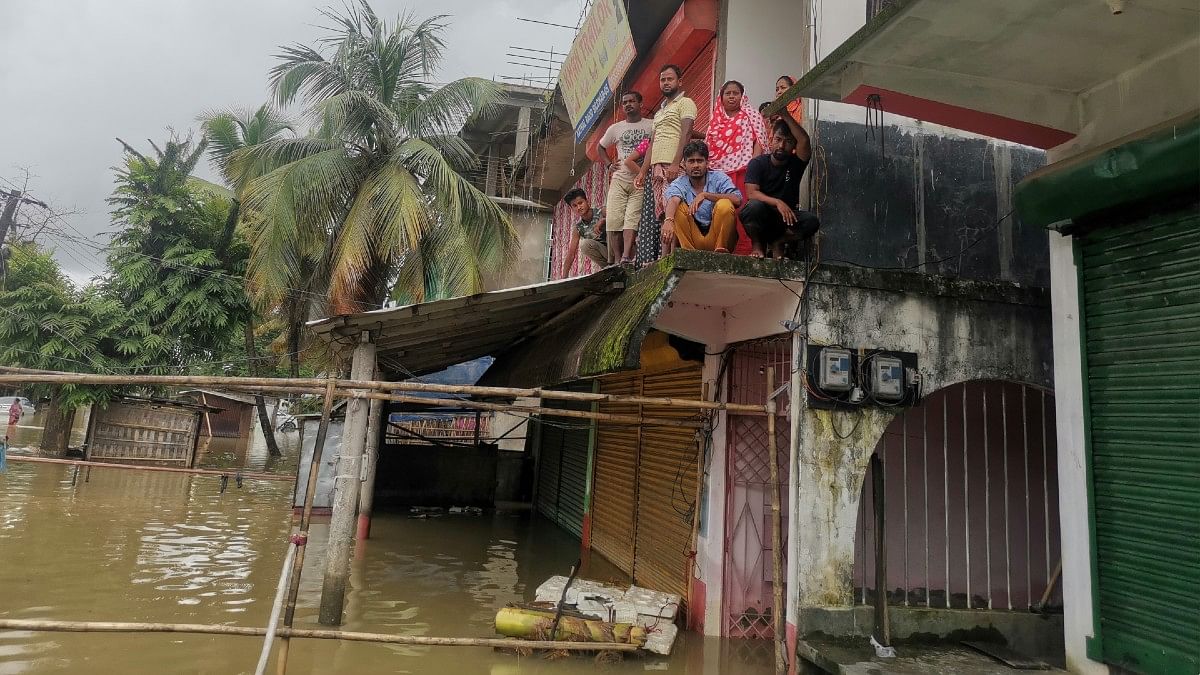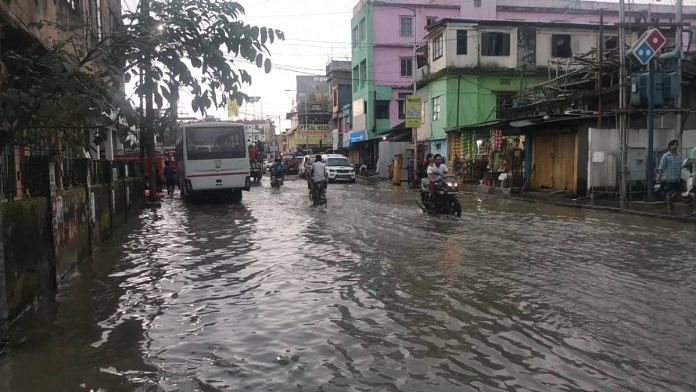Silchar: In Silchar’s Shyamananda lane, an old part of the city, several houses were built keeping in mind the devastating floods that had struck the town in the 1980s. Old timers in Silchar — the headquarters of Assam’s Cachar district — remember the 1980s floods as being the worst to have ever hit the city.
Till last week that is.
In the intervening night between 19 June and 20 June, water from the Barak river gushed through the embankment that had breached at Bethukandi, more than 3 km from the town. Silchar was inundated overnight and residents of the entire town and the nearby areas were left scrambling for their lives. The waters, according to many locals, went up higher than during the ’80s floods.
Gateway to the three Barak valley districts of Cachar, Karimganj and Hailakandi, Silchar is the largest town in southern Assam. Located 326 km away from Guwahati, it is also of strategic importance, as it is the main economic gateway to the neighbouring states of Manipur and Mizoram.
“My mother remembers the 1980s floods. She said this was worse. One of my cousins had been rescued in an army boat last Monday, but the entire boat overturned. He was somehow saved,” said Avishek Chakraborty, a government employee and resident of Public School Road, one of the worst-affected parts of the city, according to residents.
In Shyamananda lane — an area close to the Barak river — foundations of several houses built after the ’80s floods had been elevated by three to four feet above the road level. But it mattered little as water from the river came gushing in last Sunday night.
“I woke up on Monday morning (20 June) at 4.30 AM to find knee-deep water in my house. My family and I just got four hours to leave, as the water level kept rising,” recalled Shivashish Bhattachajaree, a local journalist and a resident of Shymananda road. When ThePrint spoke to him Monday, he was still living at his neighbours house, where he and his family had taken refuge that night.
He added: “Never have I seen flood water reach the Shyamananda ashram (a temple) in front of my house. But this time it did.”
As many as 2,254 villages and 22 districts have been hit by the flood in Assam. As of Monday, the flood had affected 21.52 lakh people, as well as crops in a 74,655.89-hectare area, according to the Flood Reporting and Information Management System (FRIMS) Assam. The death toll stood at 134 Monday.
Cachar is the worst affected district — out of 1.91 lakh people taking refuge in relief camps across Assam, more than 1 lakh are in Cachar alone. Similarly, 333 of the total 715 relief and relief distribution camps are operating in Cachar, according to the FRIMS data.
Also read: Found ‘mischievous activity’ in raids, Assam Police say amid reports of homes being bulldozed
A city brought to its its knees
While Bhattacharjee was trying to get his wife, child and elderly mother to safety, in another part of the city, 40 year-old Nayan Paul, an employee in a life insurance company, was struggling to save his possessions, as the flood water gushed inside his Das Colony residence.
“I started putting everything as far up as I could, assuming from previous experience that the water would not go beyond a metre. Within an hour, however, the water levels rose rapidly,” he said.

For at the next four days, Silchar remained inundated. At night, the city was plunged into darkness, owing to massive power outages. Videos of the town from 20 June, shared on social media showed gushing water everywhere.
Shops appeared to be floating in the flood waters.
While district officials and defence personnel were immediately pressed into rescue and relief operations, the magnitude of the disaster made the task a challenge.
“The entire flooding happened in a single night, because of the breach of the embankment,” said Cachar election officer and executive magistrate Navanita Hazarika, who has been overseeing the rescue and relief operations.
He added: “Initially there was a scarcity of boats, we were trying to manage with whatever boats were available we tried to manage.”
Last Tuesday, the Centre dispatched four teams from the National Disaster Response Force (NDRF) by air.
Assam Chief Minister Himanta Biswa Sarma, who was on his second visit to the flood-affected area Sunday, told reporters that “68 boats are in action. The NDRF, SDRF (State Disaster Response Force), Army and IAF are working tirelessly to ensure that relief is reaching the last mile.”
The CM also claimed that the flood was “man-made” as he had information that the embankment had been breached by some people.
A slow return to normalcy
By Monday morning, a week after water from the breached embankment flooded Silchar, crowds of people could be seen at the vegetable and fish markets and the stream of traffic had resumed, as the flood water receded from several parts of the town.
In Silchar’s Kathal area, however, many remained marooned in multi-storeyed buildings, where they had sought refuge when their own homes were submerged in the water.
“The waters have only receded by a few centimetres in the past few days,” Zakir Laskar, 27, had told ThePrint earlier. His house was still flooded when ThePrint caught up with him Monday.

A little outside Silchar town, in Ambicapur gram panchayat, the water still stood at 5 feet high Monday and rescue teams in boats have been making daily rounds for the past few days to distribute drinking water and other supplies to those stranded in their homes.
The receding flood water leaves behind a trail of devastation and loss.
“I have incurred a loss of up to Rs 2-3 lakh (owing to damage caused to furniture and home appliances). I don’t know how I’ll fix this again. The monsoons will go on till October and if it starts raining, the water might come again,” said a worried Paul.
For 50-year-old Sumeshwari Das, a daily wage worker who has been stranded at a temporary relief camp near Kathal road, it’s difficult to even fathom the extent of damage.
“Everything we have is under water. We didn’t even manage to get our clothes,” she said.
(Edited by Poulomi Banerjee)
Also read: Joblessness, perks of surrender, ‘frustration’ — how ULFA-I recruited over 40 youth in 8 months



